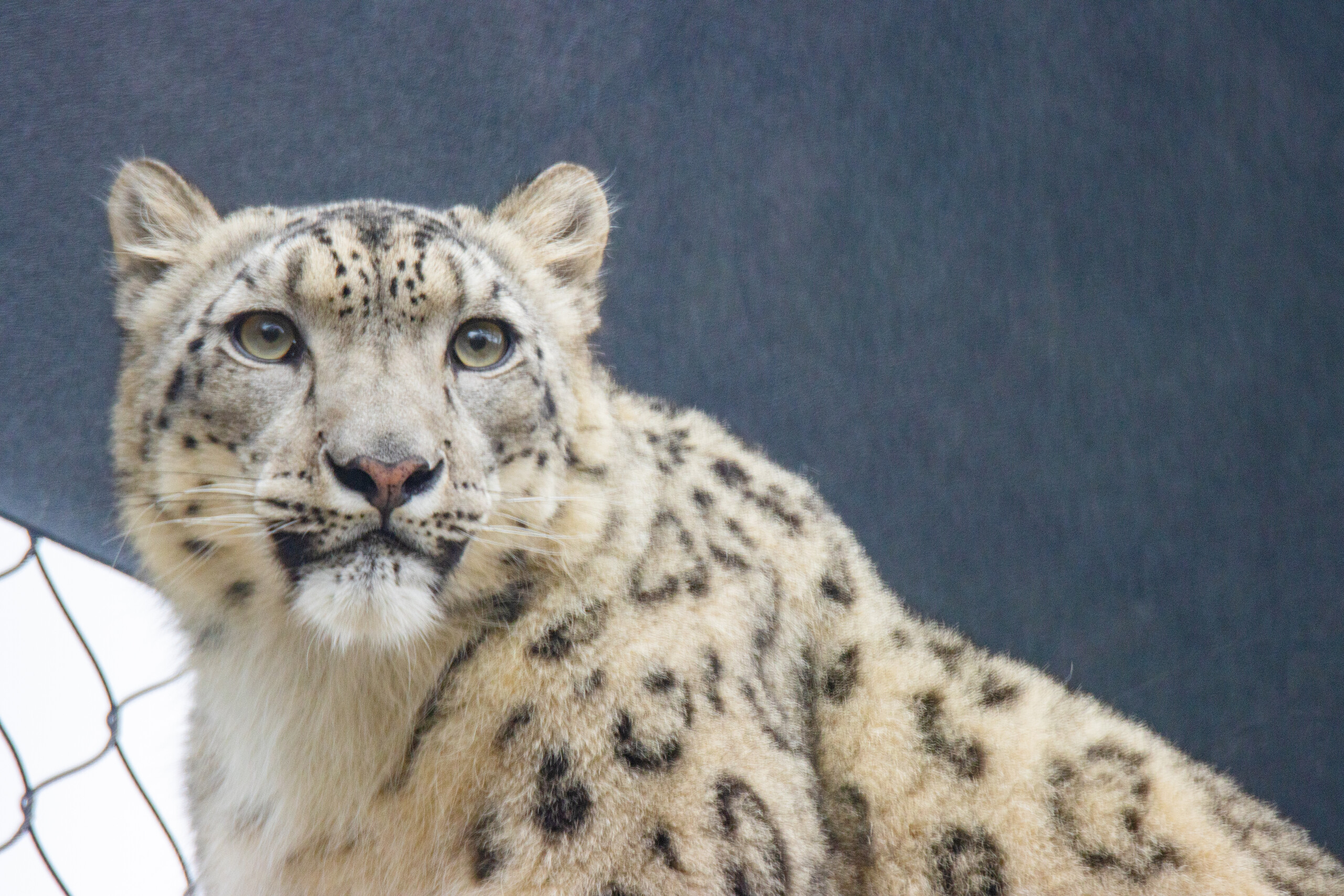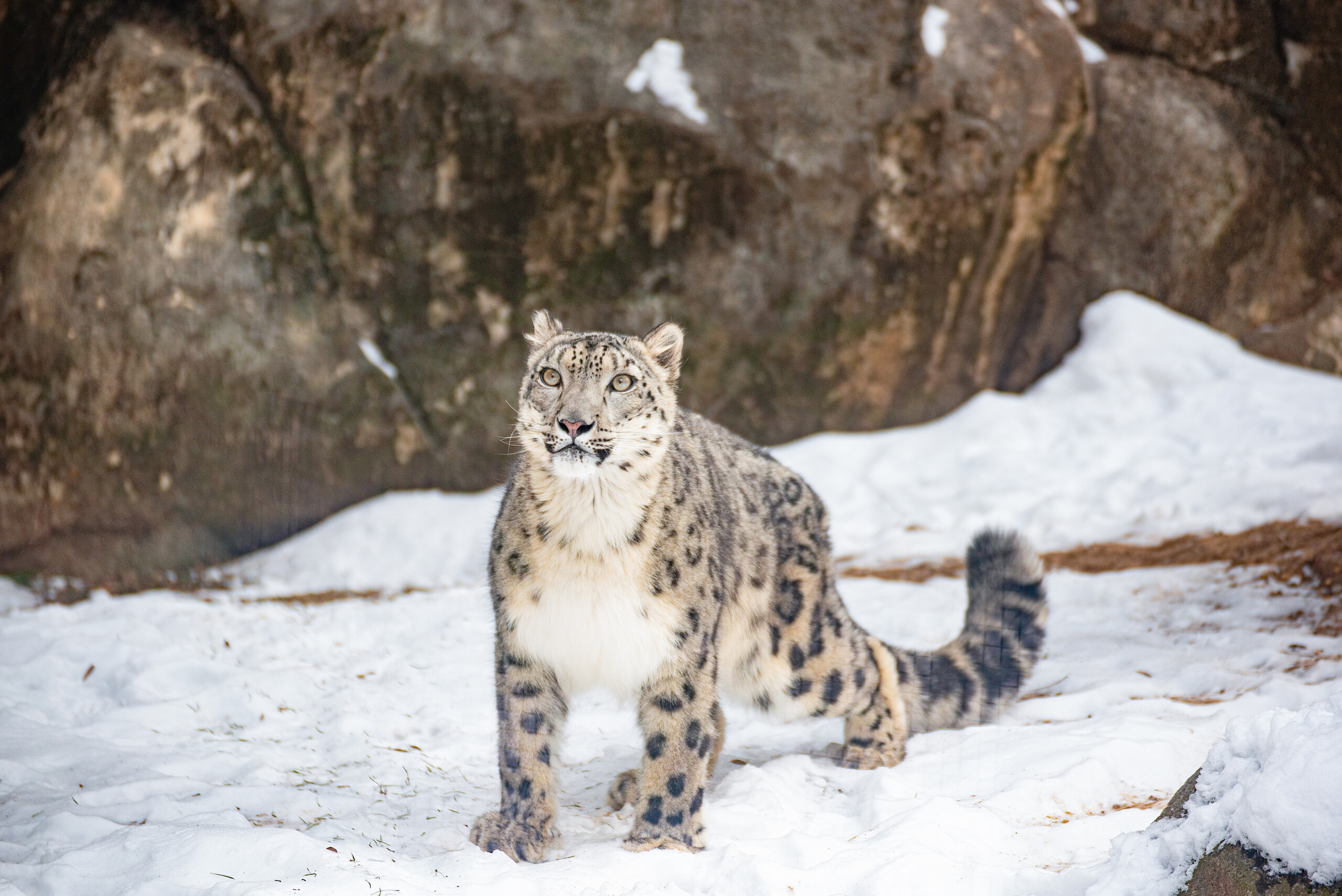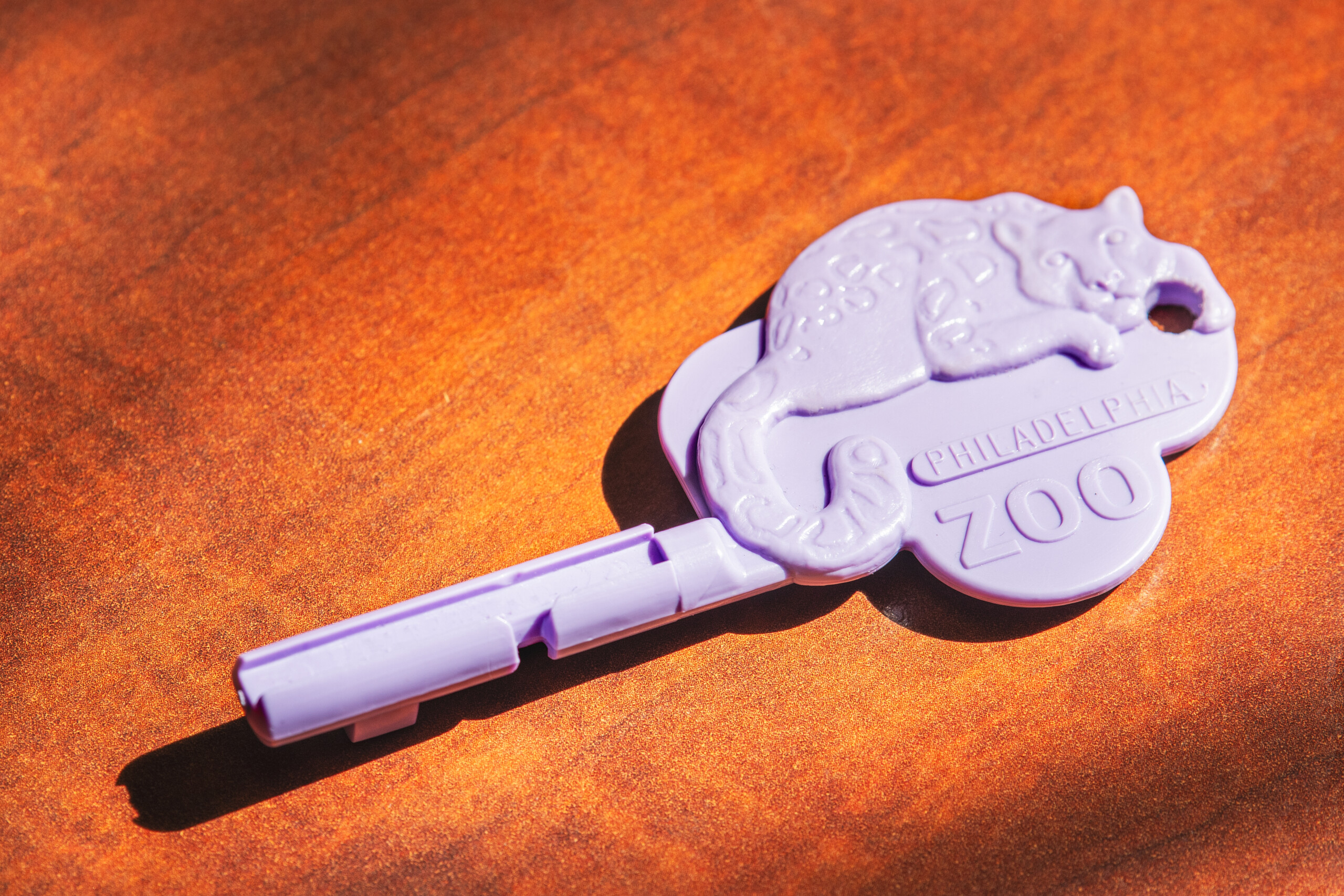
Philadelphia Zoo Announces Arrival of Snow Leopard for Species Survival Plan Breeding Program
Guests can visit 3-year-old female Marcy who is now regularly on exhibit inside of Big Cat Falls.
Philadelphia Zoo is celebrating the arrival of 3-year-old female snow leopard Marcy to its growing family. Marcy came to the Zoo on an Association of Zoos and Aquariums (AZA) Species Survival Plan (SSP) breeding recommendation with the Zoo’s 8-year-old male, Yuki, to ensure the survival of this species and maintain a genetically diverse population. Snow leopards are listed as vulnerable by the International Union for Conservation of Nature (IUCN), with only an estimated 7,000 remaining in the wild.
“We are so excited to have Marcy at the Zoo as we continue our important work to protect and advocate for this vulnerable species,” says Curator of Carnivores and Ungulates Maggie Morse. “Our big cat team has successfully bred this species in the past and is working on an introduction plan between Marcy and our male, Yuki.”
Marcy was born May 18, 2020, at Rosamond Gifford Zoo in Syracuse, New York. At three weeks old, she was diagnosed with swimmer syndrome, a condition affecting her hind legs that would have prevented her from walking if not treated successfully. The team at Rosamond Gifford Zoo created a plan that included physical therapy sessions up to three hours a day in the zoo’s clinic. After nearly 10 weeks of therapy, Marcy was walking, running and climbing. The public selected Marcy’s name after New York State’s tallest mountain.

Snow leopard Marcy comes to Philadelphia Zoo from Rosamond Gifford Zoo in Syracuse, New York.
Species Survival Plan
Philadelphia Zoo had two successful litters of snow leopard cubs in 2011 and 2013. Philadelphia Zoo works with the Species Survival Plan (SSP) breeding program of the Association of Zoos and Aquariums (AZA). The goal of this program is to manage populations of threatened, endangered and other species across AZA institutions to maintain long-term genetic and demographic viability to protect species from extinction.
Snow leopard gestation lasts from 90 to 103 days. Litter size can range from one to five cubs, but usually litters are two to three. At birth, the cubs only weigh about a pound and are totally reliant on mom. Their eyes are closed for the first seven days of life. At about two months old, they begin to eat solid food. Cubs typically stay with mom for about two years until they reach sexual maturity.
Philadelphia Zoo is home to two snow leopards, male Yuki and female Marcy.

To celebrate Marcy's arrival, a NEW snow leopard-themed Zoo key is available to Family Deluxe Zoo members.
New snow leopard-themed Zoo key
To celebrate Marcy’s arrival, we are offering a brand-new snow leopard Zoo Key to our Family Deluxe Zoo Members. Today through the end of Spring Break (April 7), use code MARCY at checkout for 10% off. Family Deluxe members enjoy:
- Admission for 2 named adults (18+) and 4 children (17 and under) each visit
- 2 FREE additional guest admission tickets to use per visit
- 10 FREE tickets per year valid on select attractions (Carousel, Train, Giraffe Experience, Wings of Asia, Nature Blazers Scavenger Hunt)
- 20% off (online only) additional select attractions, General Admission guest and Summer Ale Fest tickets and Behind-the-Scenes experiences
- 2 FREE LumiNature tickets + a 20% discount on all additional tickets
Learn more at philadelphiazoo.org/membership.
Snow Leopard Facts
- Snow leopards are found in mountain ranges of central and south Asia in countries including China, Russia, and Afghanistan.
- Their thick, grey-white coat with black rosettes serve as natural camouflage, earning them the nickname “ghost of the mountain.”
- Snow leopards have extra-large front paws that are about two to three times wider than an average hand. These giant paws help keep them from sinking into the snow.
- Snow leopards also have long, heavy tails that help with agility while navigating rocky terrain. In addition to using its long tail for balance, they often wrap their tails around themselves like a blanket while resting.
- Snow leopards weigh between 90-130 lbs., with males being larger than females.
- Snow leopard breeding season is typically January through April and gestation lasts around three months. Litters are typically 2-3 cubs.
- With only an estimated 7,000 animals remaining in the wild, snow leopards are listed as vulnerable by the International Union for Conservation of Nature (IUCN).
- In addition to human-wildlife conflict, habitat loss is another major threat to these cats in the wild.